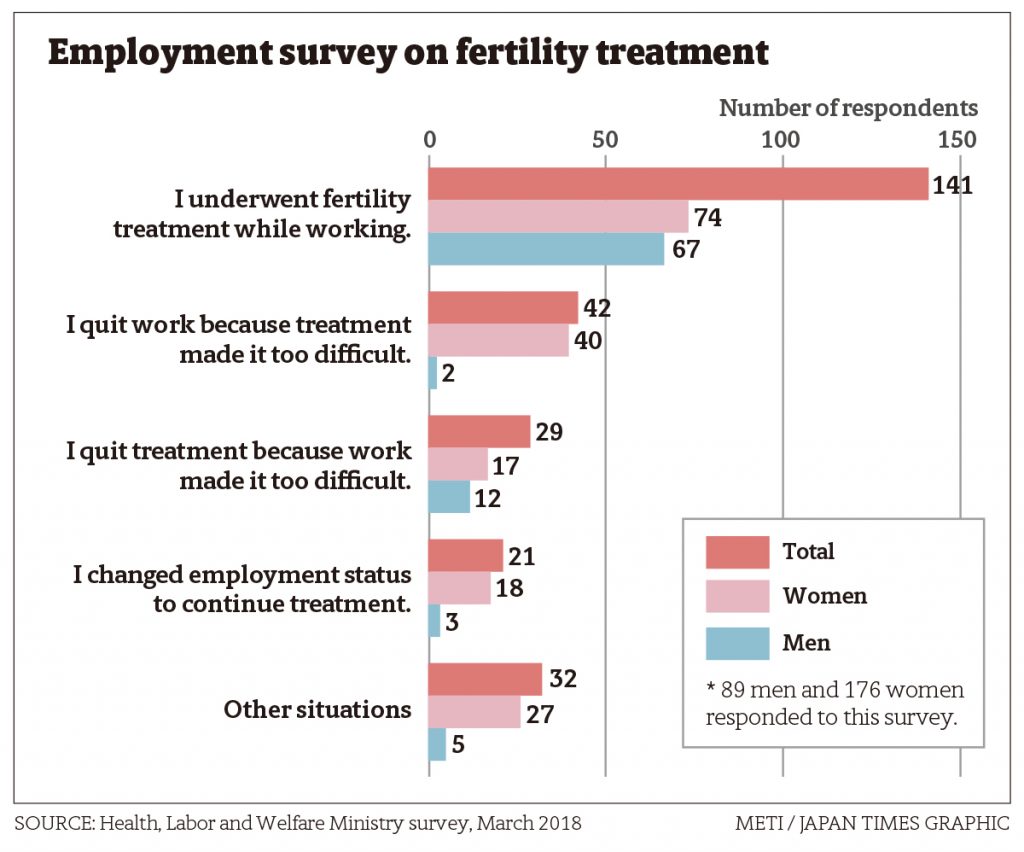Technology brings women’s health issues into focus
Technology brings women’s health issues into focus
Technology brings women’s health issues into focus

Risa Nasu, deputy general manager of MTI Ltd.’s Luna Luna business division
Working women might be underserved when it comes to health issues, but as women’s empowerment gains momentum, more companies are turning their attention to women’s health by addressing their concerns with technology instead of brushing them aside as a personal matter.
In the past, menstruation, pregnancy and menopause were regarded as taboo subjects in the workplace and related concerns were left unaddressed as matters individuals were supposed to deal with on their own. Now some companies have begun efforts to use so-called femtech (products and services that incorporate technology to address women’s health) to improve the mental and physical status of women and take maximum advantage of their professional abilities. This article introduces two companies offering femtech services aimed at contributing to the creation of a society where everyone can shine.
Women’s health goes high-tech
Femtech, a portmanteau of female and technology, was coined by Danish entrepreneur Ida Tin, the chairwoman of Clue. The word has been gaining currency since around 2016 after she used it to solicit investment in the Clue menstrual cycle forecasting app she developed. The app garnered attention for its claim to solve worries specific to women, who represent half the population of the planet. Investment is gradually increasing, driven by expectations for growth.

Personal or global in scope?
What are the impacts of mental and physical health issues on working women? Needless to say, they are unique to women, but there are findings that suggest the impact goes beyond the personal and negatively affects society at large.
For example, menstruation is said to cause economic and societal losses. The annual financial burden from the associated symptoms, including loss of labor, doctors’ fees and medicine costs, is estimated to total about ¥700 billion, according to a report by the Ministry of Economy, Trade and Industry’s Healthcare Industries Division from March 2019.
In addition, female-specific events can cause some to give up their career plans. For example, women with fertility problems are often forced to accept changes in employment status or quit if treatment makes it too difficult to continue. Some give up promotions or even resign due to the difficulties posed by menopausal disorders. According to a March 2018 survey by the Ministry of Health, Labor and Welfare, women forced to quit their jobs to continue fertility treatment came to 22.7%, with 9.7% giving up on treatment due to difficulties posed by work, bringing the total to 32.4%. This finding suggests changes and declines in mental and physical condition specific to women are making it too difficult to achieve their career goals.

The desire to address these female-specific issues was behind the birth of femtech. Now, the question is what are the solutions femtech aims to provide?
Women facing their bodies
“There are few opportunities for women to learn about their own bodies,” Risa Nasu, deputy general manager of MTI Ltd.’s Luna Luna business division, said. “It’s important for them to have the correct knowledge.”
Although many women experience severe menstrual pain and symptoms of premenstrual syndrome, “there are many who do not regard premenstrual pains as disorders. They tend to take it for granted that they have to deal with the pains themselves simply because they are women,” Nasu said. Since it is difficult to compare one’s cramps with somebody else’s, women tend not to think of going to the doctor if they do not regard such pain as an illness, she said.
“Menstruation is a mechanism in which hormonal changes cause physical conditions to change, and it’s by no means a temperamental issue specific to women,” she said. “It’s important to understand that it’s a legitimate bodily mechanism.”
Therefore, acquiring practical knowledge about their own bodies is the first step women should take, Nasu said.
MTI’s femtech service helps women understand and manage their menstrual cycles so they can deal with their bodies and correctly understand them.
Men must play a role
Japan Research Institute analyst Akiko Kojima says that while it is important “for women to voice their views” to help resolve their health issues, it won’t help that much unless men pitch in by listening.
“It’s essential for men to pay attention,” she said.
Today, an increasing number of companies are introducing content, in training programs for men that in the past had only been used for women only. These companies are trying to provide opportunities for male managers and employees to learn more about women’s health. Women are generally reluctant to discuss the changes or illnesses they are experiencing with male supervisors, but such training programs “can improve the working environment by improving male supervisors’ understanding,” Kojima said. “For example, construction sites used to be dominated by male workers and have only unisex toilets. This made it difficult for women to use them,” she said. “As a result of training programs, women-only toilets started to be installed. Since male decision-makers are gaining a deeper understanding now, there are increased efforts to create working environments that take women’s physical needs into account so they are comfortable.”
As men come to know more about women’s health, they may have a better understanding of the situations women face, which could lead to improvement in the way they interact at work, as well as better measures to address women’s health issues.
Some femtech products and services are designed to provide notifications about women’s mental or physical status to men with the aim of prompting them to pay greater attention to their needs. Effective use of such products is expected to help promote men’s understanding without causing stress.
Issues specific to Japan
What are the issues that can slow efforts to introduce femtech?
Daisuke Shigemi, who supervises Kids Public’s Sanfujinka Online(OB-GYN Online), a service that provides health consultations to women, said: ”Regulations are significantly different from country to country. For example, online health care services are widely used in the United Kingdom and China, where the number of instances of online services provided reaches several tens of thousands. In particular, the U.K. has a thorough system. The government pays for equipment expenses related to online health care services for all health care facilities.”

Daisuke Shigemi, representative of Kids Public’s Sanfujinka Online (OB-GYN Online)
“That said, different countries have different circumstances, and I think what Japan can do is to adopt a system that suits its situation,” he said. “It wouldn’t always work if Japan imitated what European countries and the United States are doing if you think of female physical characteristics, their relationships with their families or partners or the existing medical system in Japan. For example, it’s important to grasp what is worrying women, including postpartum depression, and issues specific to Japan, such as oral contraceptives that are not widely used, and prepare what is necessary.”
Shigemi said he has high hopes the government will play a supporting role in encouraging the increased use of femtech.
“It would be great if the government could point to solutions and basic policy, and outline the roles local governments and private-sector companies and entities should play,” he said.
Three-way cooperation
For working women to effectively deal with their health issues and put their abilities to maximum use, it is important for men as well to have correct knowledge of female health issues and deepen their understanding. In addition, companies must work to prepare environments that can accommodate diverse working styles. For this, it is important to find ways to get the most out of this new innovative tool.
At the same time, the government must provide appropriate support to ensure the efforts of individuals and companies can proceed smoothly. It appears the key to creating a society where each individual can ensure their own well-being is to combine the efforts of workers, companies and the government.




